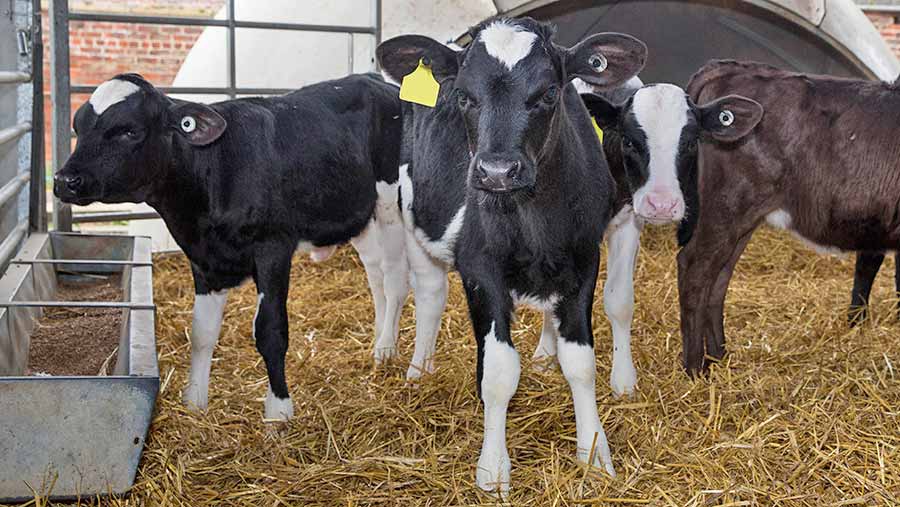Business Clinic: Should I calve sucklers at two years instead of three?
 © Tim Scrivener
© Tim Scrivener Whether you have a legal, tax, insurance, management or land issue, Farmers Weekly’s Business Clinic experts can help. Here, James Worthington offers advice about ideal calving ages.
Q I have a spring calving suckler herd of 200 cows which has been virtually closed since I started using a Simmental bull and retaining some of my homebred heifers for replacements.
Prior to that I purchased dairy bred Angus and Limousin cross heifers for breeding. Now the only cattle I need to buy in are stock bulls. I calve my heifers at three years old because I don’t have an autumn calving block, but I am conscious that current advice is to calve them younger.
Should I take the plunge and calve my heifers at two years?
A This is a good option if you can ensure that your heifers are well enough grown when they go the bull at 15 months. They need to be at least 400kg bulling weight, but this should be readily achievable as it only equates to a daily liveweight gain of 0.8 kg/day from birth to serving (assuming a modest birthweight of 40kg).
See also: Options for vacant farm cottages
The advantage of calving them younger is that you effectively eliminate a year group, with the associated saving in feed, housing and bedding. Alternatively, with the release of extra land and buildings it gives you the option to carry more cows.
 James Worthington
James Worthington Food, farming consultant, Savills
Calving your heifers younger also reduces your carbon footprint by cutting methane and other greenhouse gas emissions.
When you select your heifers for breeding, I suggest that as well as using your stockmanship skills you choose those heifers which are a good weight for their age, have milky dams and have a large pelvis.
Your vet should be able to measure the pelvises of your proposed replacements, so that any with a small pelvic area can be discarded for breeding. Purchasing bulls with easy calving EBVs is also prudent.
Young heifers are generally very fertile, but should any fail to conceive then they can be fattened and sold at well under 30 months (whereas you have to be very disciplined about pregnancy testing three-year calving heifers early to catch those which are barren and to be able to sell them finished before they turn 30 months).
Managing size
Calving your heifers younger should also enable you to manage mature cow size more effectively. A 650kg cow weaning a 300kg calf is clearly more efficient than an 800kg cow weaning a 300kg calf because the 800kg cow costs more to maintain.
A two-year calving heifer should continue to be grown on rapidly during its second summer at grass, but not overfed in late pregnancy to avoid the unborn calf growing too large in the third trimester and causing calving difficulties.
Ideally with a 200-cow herd you would expect to replace 12-15% annually, with any barren cows being automatically culled (particularly as you don’t have an autumn calving herd) and being replaced by heifers.
There will also be some cows that you choose not to put to the bull again and cull once their calves are weaned.
With careful herd management, the financial benefits of introducing calving at two years old outweigh your current system, particularly if you pay careful attention to animal husbandry and selection for breeding.
Do you have a question for the panel?

Outline your legal, tax, finance, insurance or farm management question in no more than 350 words and Farmers Weekly will put it to a member of the panel. Please give as much information as possible.
Send your enquiry to Business Clinic, Farmers Weekly, RBI, Quadrant House, The Quadrant, Sutton, Surrey SM2 5AS.
You can also email your question to fwbusinessclinic@rbi.co.uk.
